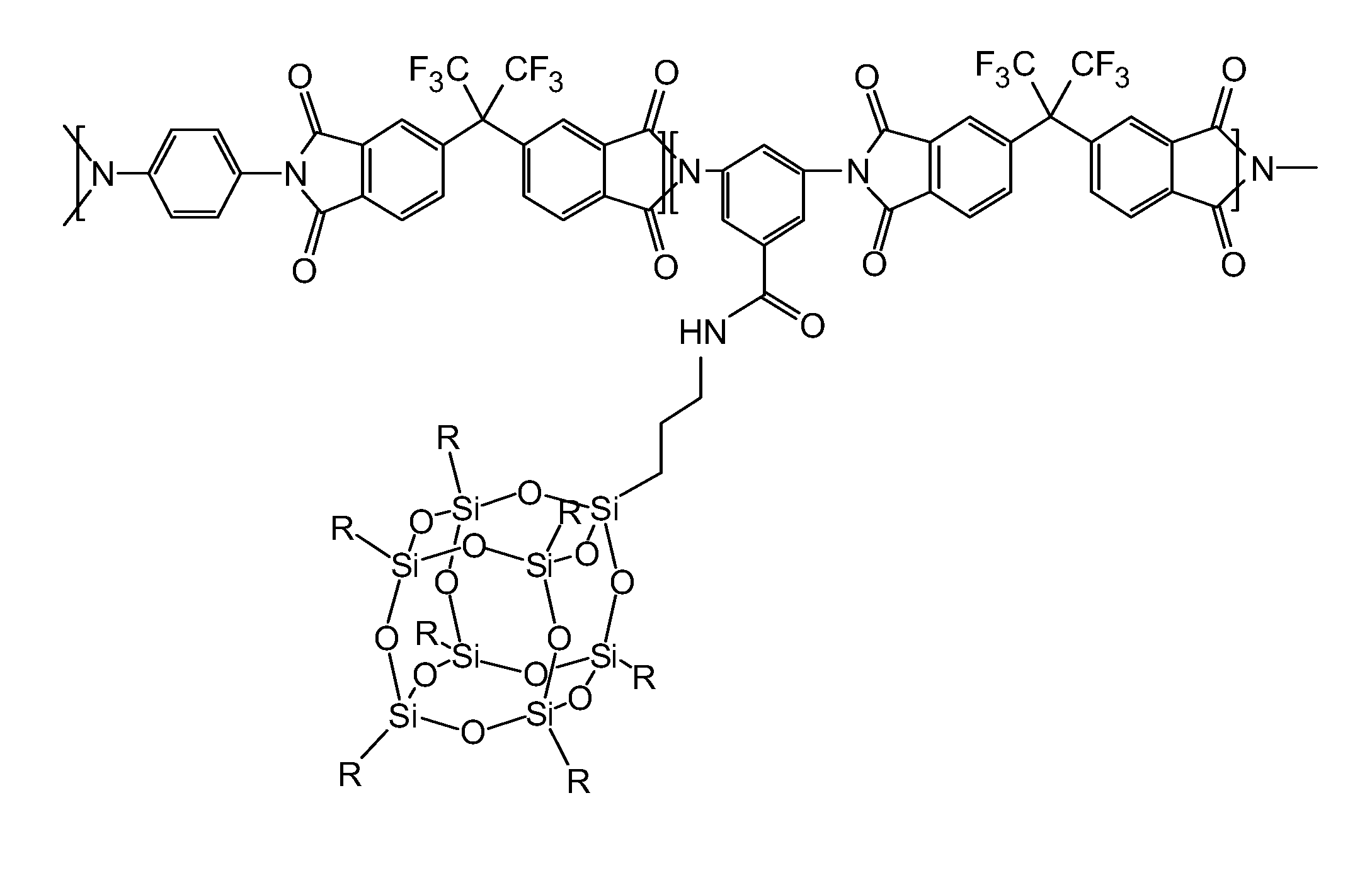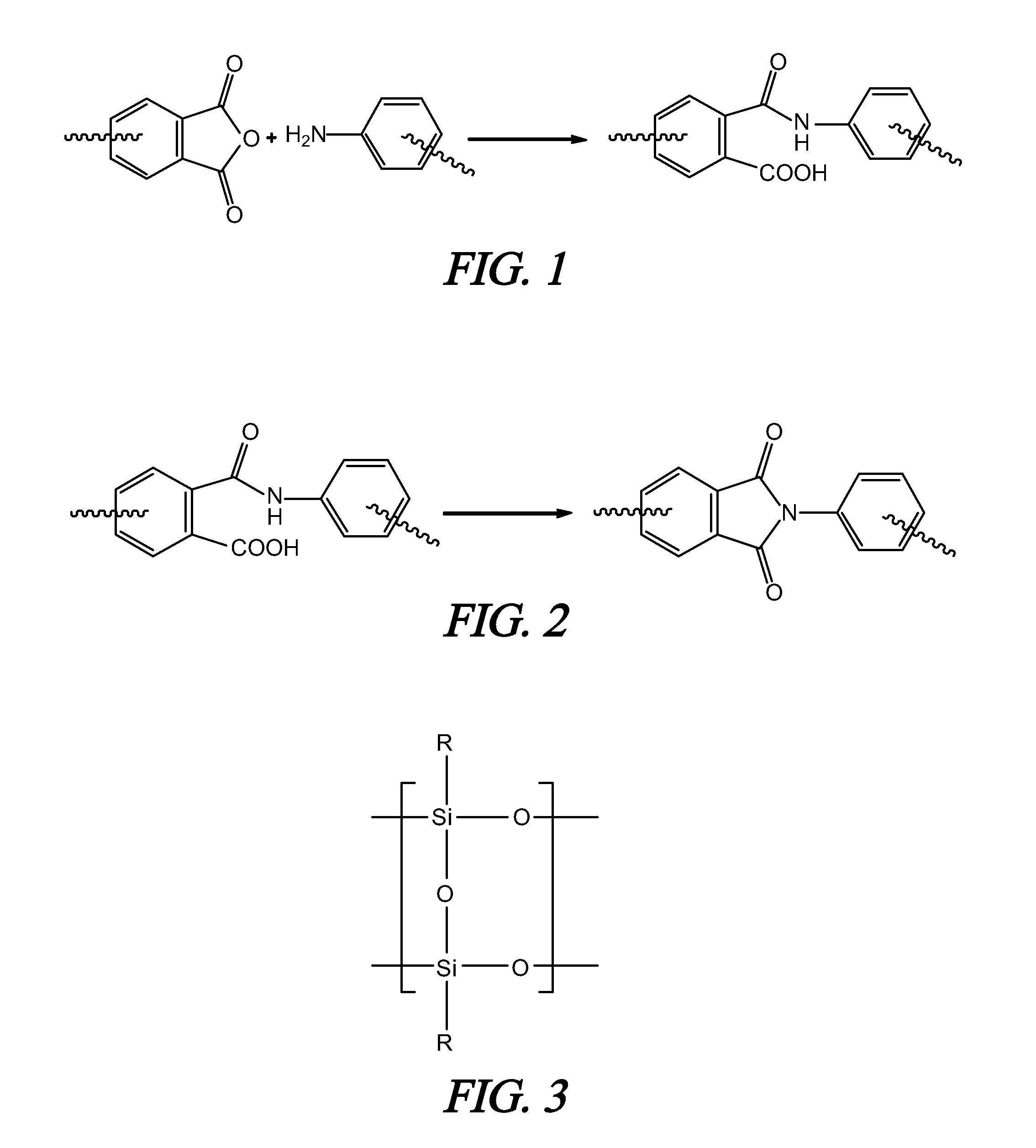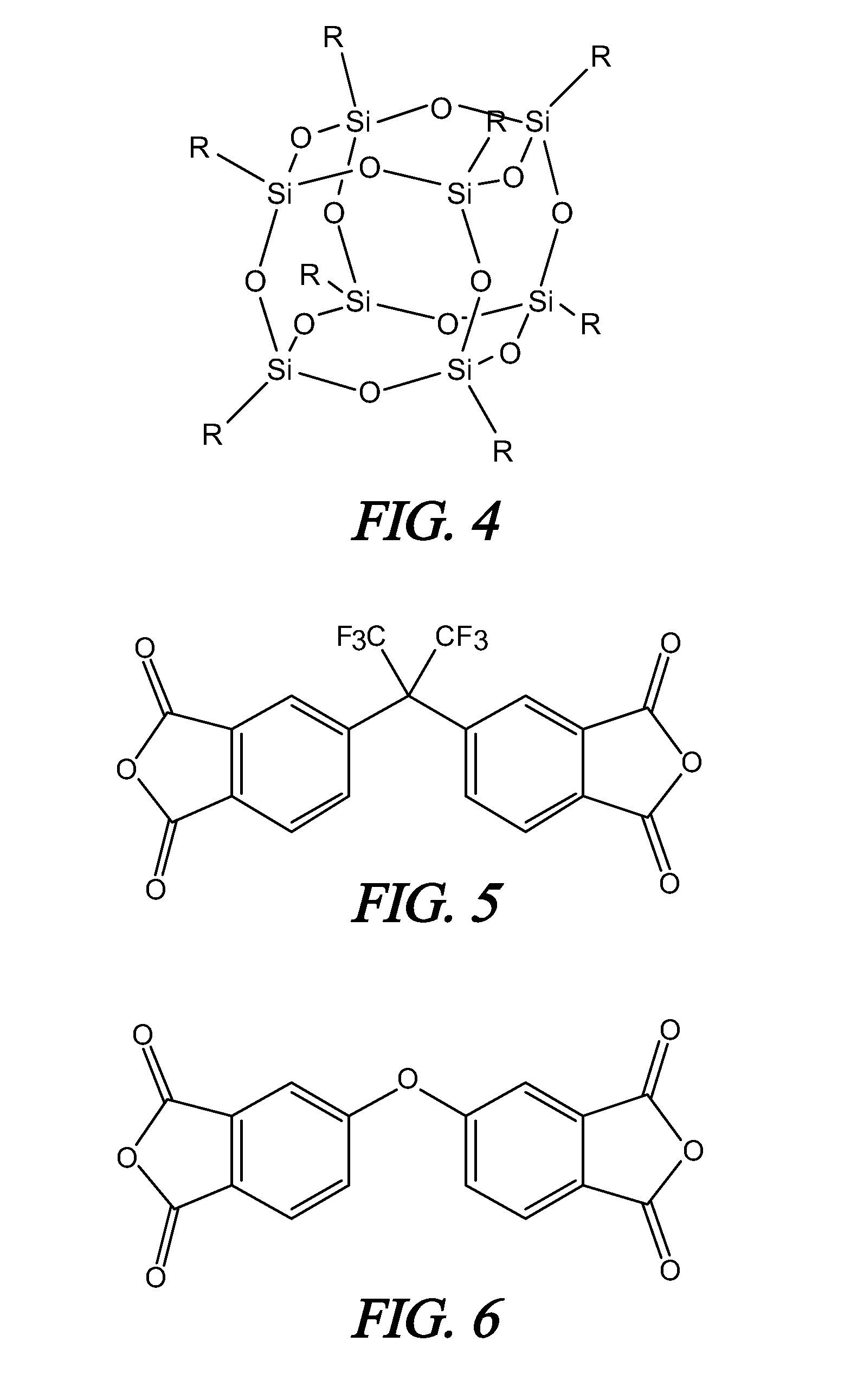Polymeric coating for protecting objects
a polymer and object technology, applied in the field of protective covers, can solve the problems of reducing the thickness of the polymer material, affecting the protection surface, and experiencing cracking from thermal and mechanical forces
- Summary
- Abstract
- Description
- Claims
- Application Information
AI Technical Summary
Benefits of technology
Problems solved by technology
Method used
Image
Examples
example 1
[0079]To a clean, dry, 5 liter (l) reactor equipped with an overhead stirrer, thermometer, and rubber septa were added 428.26 grams (g) APB, 81.88 g DBA, and 5591.08 g DMAc. The reactor was sealed and purged with dry argon while the solution was stirred vigorously with the overhead stirrer until the regents dissolved. To this solution was added 898.76 g 6FDA, and the resultant slurry was stirred for 24 hours, at which point 13.78 g phthalic anhydride (PA) was added to the reaction vessel and allowed to react for 4 hours. 501.18 g pyridine and 646.84 g acetic anhydride were added to this solution. The solution was stirred for 24 hours at room temperature, 24 hours at 70° C., then cooled to room temperature and precipitated in deionized water. The recovered polymer, which is referred to as SPC, was washed three times with water, and dried overnight in a vacuum oven at 100° centigrade (C) to yield 1374.81 g dry SPC (98% yield).
[0080]To a clean, dry, 5 L reactor equipped with an overhea...
example 2
[0081]To a clean, dry, 5 L reactor equipped with an overhead stirrer, thermometer, and rubber septa were added 1050.00 g of SPC prepared in Example 1 and 4000.00 g tetrahydrofuran (THF). The reactor was sealed and purged with dry argon while the solution was stirred until homogeneous. 403.18 g aminopropylisobutyl polyhedral OS, 87.51 g DCC, and 2090.00 g THF were added to this solution. The reaction was allowed to proceed for 24 hours at room temperature. The reactor was then cooled to 0° C. for three hours during which time the contents become heterogeneous. The contents of the reactor were drained, and filtered to remove the precipitate. The recovered polymer solution was precipitated into deionized water, recovered, and rinsed three times with deionized water. The OS-containing polymer was then dried in a vacuum oven at 110° C. for 48 hours to yield 1207.90 g dry polymer (98% yield).
High Altitude Environments
[0082]High altitude environments can degrade many materials over a relat...
PUM
| Property | Measurement | Unit |
|---|---|---|
| temperature | aaaaa | aaaaa |
| temperature | aaaaa | aaaaa |
| altitudes | aaaaa | aaaaa |
Abstract
Description
Claims
Application Information
 Login to View More
Login to View More - R&D
- Intellectual Property
- Life Sciences
- Materials
- Tech Scout
- Unparalleled Data Quality
- Higher Quality Content
- 60% Fewer Hallucinations
Browse by: Latest US Patents, China's latest patents, Technical Efficacy Thesaurus, Application Domain, Technology Topic, Popular Technical Reports.
© 2025 PatSnap. All rights reserved.Legal|Privacy policy|Modern Slavery Act Transparency Statement|Sitemap|About US| Contact US: help@patsnap.com



